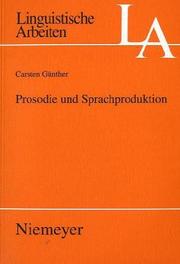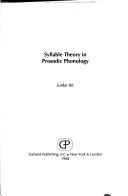| Listing 1 - 10 of 179 | << page >> |
Sort by
|
Book
Year: 1970 Publisher: Montreal : Librairie Didier,
Abstract | Keywords | Export | Availability | Bookmark
 Loading...
Loading...Choose an application
- Reference Manager
- EndNote
- RefWorks (Direct export to RefWorks)

ISBN: 3484303999 Year: 1999 Publisher: Tübingen M. Niemeyer
Abstract | Keywords | Export | Availability | Bookmark
 Loading...
Loading...Choose an application
- Reference Manager
- EndNote
- RefWorks (Direct export to RefWorks)

ISBN: 3484304014 Year: 1999 Publisher: Tübingen Max Niemeyer Verlag
Abstract | Keywords | Export | Availability | Bookmark
 Loading...
Loading...Choose an application
- Reference Manager
- EndNote
- RefWorks (Direct export to RefWorks)
Book
Year: 1970 Volume: 3 Publisher: Montréal : Librairie Didier,
Abstract | Keywords | Export | Availability | Bookmark
 Loading...
Loading...Choose an application
- Reference Manager
- EndNote
- RefWorks (Direct export to RefWorks)
Book
ISBN: 0387124284 Year: 1983 Volume: 14 Publisher: Berlin ; New York : Springer-Verlag,
Abstract | Keywords | Export | Availability | Bookmark
 Loading...
Loading...Choose an application
- Reference Manager
- EndNote
- RefWorks (Direct export to RefWorks)
Book
Year: 1979 Publisher: [Utrecht]: [éditeur inconnu],
Abstract | Keywords | Export | Availability | Bookmark
 Loading...
Loading...Choose an application
- Reference Manager
- EndNote
- RefWorks (Direct export to RefWorks)
Prosodic analysis (Linguistics) --- Dutch language --- Dutch language

ISBN: 0824051890 Year: 1988 Publisher: New York : Garland Publishing,
Abstract | Keywords | Export | Availability | Bookmark
 Loading...
Loading...Choose an application
- Reference Manager
- EndNote
- RefWorks (Direct export to RefWorks)
Syllabication --- Prosodic analysis (Linguistics) --- Syllabation --- Prosodie (Linguistique)

ISBN: 0815316992 Year: 1995 Publisher: New York (N.Y.): Garland
Abstract | Keywords | Export | Availability | Bookmark
 Loading...
Loading...Choose an application
- Reference Manager
- EndNote
- RefWorks (Direct export to RefWorks)
Lexical grammar --- Lexical phonology --- Prosodic analysis (Linguistics)
Book
ISBN: 9780197267462 0197267467 Year: 2023 Publisher: Oxford Oxford University Press
Abstract | Keywords | Export | Availability | Bookmark
 Loading...
Loading...Choose an application
- Reference Manager
- EndNote
- RefWorks (Direct export to RefWorks)
How can we reconstruct the rhythms and cadences – the prosody – of past languages? Prosody in Medieval English and Norse approaches this problem by comparing two closely related languages with a long written history in the Middle Ages. Through a series of case studies on vowel reductions and alliterative verse forms, Kaster identifies important continuities in the internal rhythmic structure of words and explores the enduring role of the bimoraic trochee.The main rhythmic building block of these languages, the bimoraic trochee, shapes both linguistic change and poetic structure. The bimoraic trochee played a defining role in the loss of many unstressed vowels that took place in English and Norse in the 6th and 7th centuries, and continued to influence vowel reductions in later English. In alliterative poetry, the bimoraic trochee explains previously opaque restrictions against using certain words in certain metrical contexts, especially the controversial Kaluza's law in Beowulf and Craigie's law in the Poetic Edda. Together, these case studies allow prosodic change and stability to be traced over time.
Prosodic analysis (Linguistics) --- English language --- Scandinavian languages
Book
ISBN: 3642407722 Year: 2024 Publisher: Berlin, Germany : Springer,
Abstract | Keywords | Export | Availability | Bookmark
 Loading...
Loading...Choose an application
- Reference Manager
- EndNote
- RefWorks (Direct export to RefWorks)
With broad coverage of the entire field, this volume combines linguistic and speech technology approaches and offers hands-on guidance alongside detailed descriptions of analytic techniques in speech prosody as well as software for automatic analysis.
| Listing 1 - 10 of 179 | << page >> |
Sort by
|

 Search
Search Feedback
Feedback About UniCat
About UniCat  Help
Help News
News